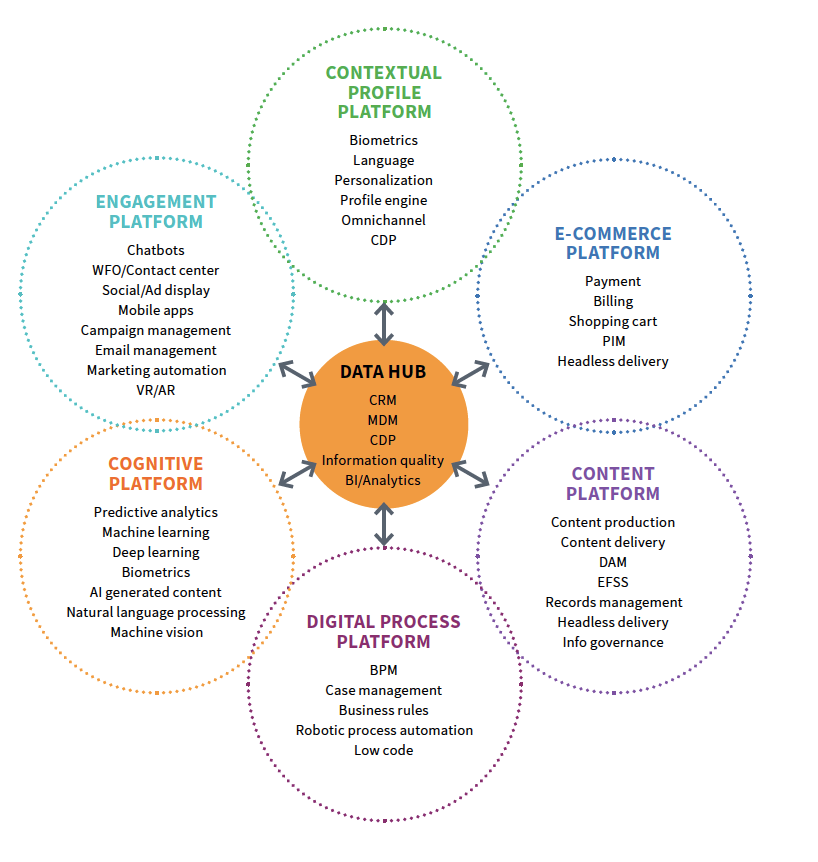
One of the most interesting areas of digital infrastructure that companies are putting in place today are ‘Digital Experience Platforms’ (DXPs). Digital disruption is the flip side of digital opportunity and it’s an unstoppable force. Businesses large and small are enlisting new technologies in the battle to dislodge incumbents, protect entrenched positions, or re-invent entire industries and business activities with processes, only made possible through digital change and innovation. For every HMV or Blockbusters story of digital disruption missed, there is an Uber or Dollar Shave Club mirror story of digital opportunity taken.
For brands to make sure they are on the opportunity side rather than the side of disruption, they are increasingly turning to DXPs to build, deploy and continually improve websites, portals, mobile and other digital experiences. Many DXP offerings derive from web content management (WCM) systems, or content and collaboration systems as they evolve to support individualized digital experiences. It’s no surprise that the leaders in the DXP space are Sitecore, Adobe and IBM – according to Gartner’s latest Magic Quadrant.
However, DXPs are not uniform platforms. Rather they are an assembly of various different capabilities needed to serve digital experiences to customers. The Digital Clarity Group, in their May 2018 report, ‘Digital Experience Platforms: Buyer Trends, Preferences, and Strategies’ describe 6 components that make up a DXP:





Leave a Reply